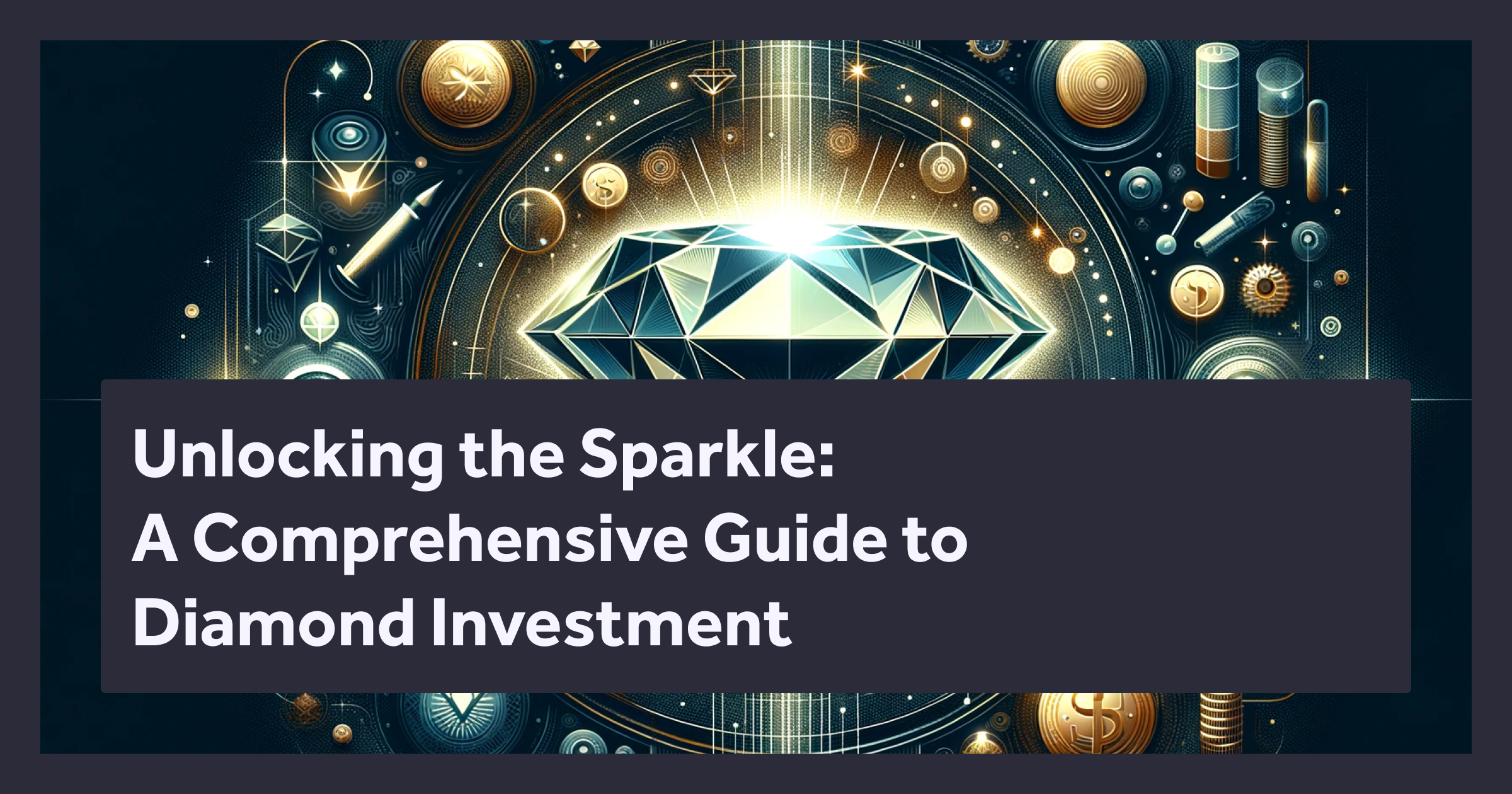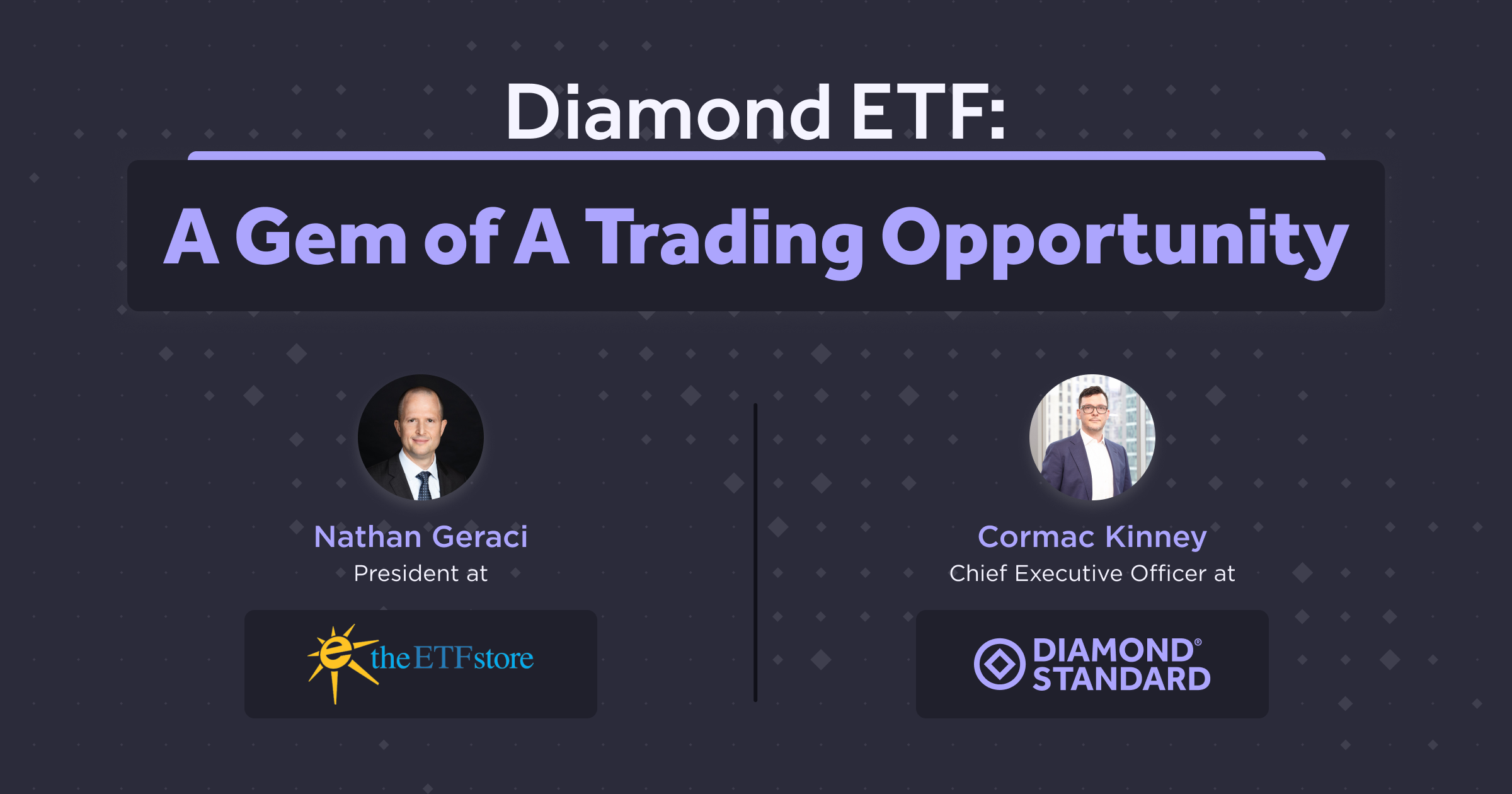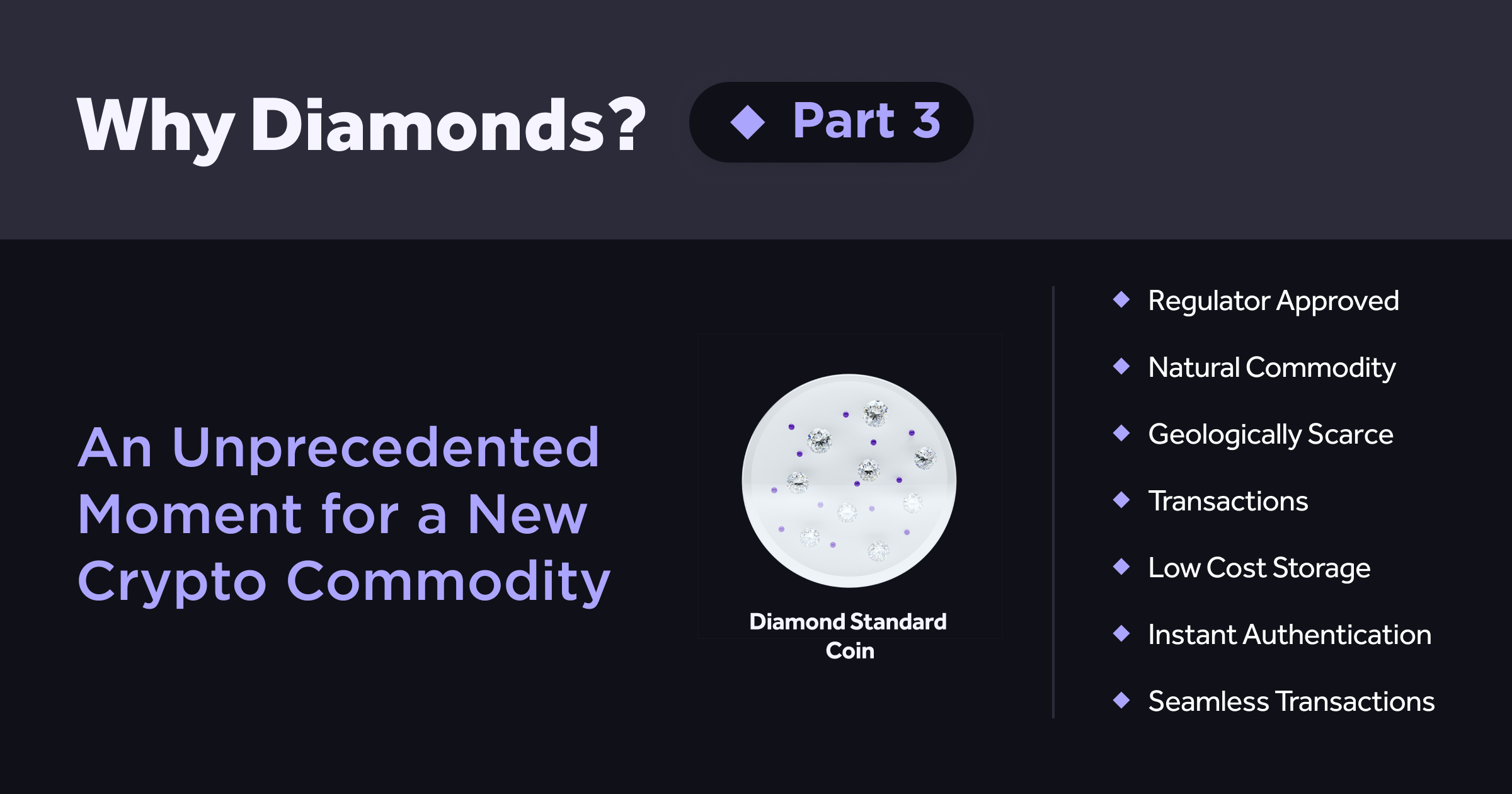This Article Explores
One could argue that an asset’s right of passage to the commodity world is becoming an exchange traded fund (ETF). If true, diamonds might be the next asset to become financially tradable.
Diamond Standard is changing the landscape of ETFs by introducing the first physically-backed Diamond ETF to market. A new ecosystem built around the financial diamond market will inevitably create plenty of financial options for both diamond buyers and sellers.
ETF Prime’s Nathan Geraci recently interviewed our Founder & CEO Cormac Kinney on ETF Store, nationally recognized as the first investment advisor to offer only exchange-traded funds (ETFs).
The Cut brings you highlights of their innovative interview on the future of the diamond ETF and how it can provide the best portfolio asset allocation in the most efficient, transparent, and flexible manner.
This interview has been edited and condensed for clarity.
Nate Geraci: Cormac, let's start from the beginning, and then we'll get into the ETF efforts. Just give us a quick backstory on why you started Diamond Standard and exactly what you're building here.
Cormac Kinney: My background is in computer science. I spent many years building trading systems. And I ran a company called NeoVision, where I designed over 100 trading systems and that company was eventually acquired by the Carlyle Group. After that, I spent six years as a quantitative portfolio manager and I ran U.S. Equities for Tudor Investment Corp and Millennium.
Over the last 20 years, my wife has taught me about diamonds, and she’s a famous jewelry designer based here in New York named Mimi So. What I learned about diamonds is that it’s an incredible $1.2 Trillion asset class. However, investors could never leverage diamonds as an asset because every diamond is different. There is no price transparency, no liquidity, and the friction to trade diamonds is immense.
For an ETF, the problem is that you could never mark a diamond to market. Without that simple fundamental pricing mechanism, you could never launch an ETF. Using my background in computer science and trading systems, I invented the world's first fungible diamond commodity. And that’s the Diamond Standard coin.
Nate Geraci: I want to make sure I have this right; each chip has eight to 10 diamonds, and there’s a military-grade wireless encryption chip that's in this as well. The chip stores a digital token, which allows users to instantly authenticate, audit, and trade the coin electronically on the blockchain. My understanding is that the width of these is about the size of a half-dollar. I’m very curious about the blockchain element here.
Cormac Kinney: The breakthrough is that we can prove that every coin is equivalent. You’re right, the chips contain diamonds, and it's eight to nine, but those diamonds always add up to an identical market value based on the geology in each coin.
The computer science breakthrough is how we achieve that, and it's interesting because it is all based on automated market making. Diamond Standard is the world's first market maker in the history of diamonds.
We make a transparent bid on 16 million varieties of diamonds weekly, and those bids are on an exchange that also happens to be the world's first electronic diamond exchange. At the end of each week, Diamond Standard buys a statistically valid sample of all 16 million diamonds. In essence, we are purchasing the same pile of 10,000 Diamonds every week and putting these into bars. Every coin or bar is a statistical sample of all the diamonds globally, thus making them all equal.
Nate Geraci: I know you have a trust filed, but do you sell these diamond coins directly to individual investors? Who holds the coins if they’re traded digitally on the blockchain? Who actually custody these? How does that process work?
Cormac Kinney: We decided to be a regulated company and issue a regulated offering. We knew that the world couldn't just trust us that the diamond coins were fair, fungible, etc. So, we applied for regulatory oversight by the Bermuda Monetary Authority and, after two years, got approved.
In March of 2021, we had an initial offering where we were only allowed to sell $25 million worth of these coins due to the BMA being concerned that we would maybe steal the money, hence why a limit was initially placed. With these proceeds, we formed this exchange and did the first automated market making to buy the commodity.
The customers are individual investors, and since that initial offering, we have gotten unlimited approval to sell hundreds of millions of these coins. For the most part, the clients who buy these are self-directed investors or hedge funds.
Since the launch, we have received approval from the CFTC via licensees, and we are also launching a futures contract on the CME. The futures contract will create a national market price, and it is necessary to price an ETF. We do not expect the world's BlackRocks to start building positions until after the futures are launched in about three months.
Nate Geraci: If I'm an individual investor and purchased one of these, is the coin sent directly to me? Is it a third-party custodian that holds a coin? How does that work?
Cormac Kinney: You have a choice. We have a global custody partnership with Brinks. What's fascinating about diamond coins is that they are taxable, so you can always choose to take delivery of your coin.
However, if we ship it to you in New York or California, we have to collect a sales tax. What we have arranged with Brinks is that we invested together to build a facility in Delaware, where there is no sales tax. About 99% of our clients have their coins delivered in their name to Brinks in Delaware.
Nate Geraci: So let’s say I take ownership of one of the coins, and then I ultimately transfer it to a custodian because I want to sell it. What happens with a digital token?
Cormac Kinney: The digital token is a major breakthrough. Inside every coin is a wireless computer chip, so the token is inside the coin with the diamonds.
Your blockchain wallet is the Key. So when you buy the commodity, the coin is delivered to Brinks. You hold the Key, or we can hold it at a digital custodian for institutional investors. While that physical coin is sitting at Brinks, you can trade the Key on an exchange, and whoever owns that Key owns the commodity.
Diamond Standard has the world's only regulator license for a commodity token, meaning whoever owns that token has a regulator-supervised process of the physical commodity. That token can be owned by the futures contract or the ETF custodian.
Nate Geraci: I understand there is a trust filed, and it sounds like the structure of this trust is very similar to the Grayscale Bitcoin Trust. The shares are available to accredited investors, and there is a lockup period. Is that a fair comparison for what you are initially trying to do with the trust?
Cormac Kinney: We are launching two things. The first thing we are launching is a private fund, which is very much like the GBTC trust. When you have an ETF in the U.S., you have to have an authorized participant who allows the shares' daily creation and redemption. GBTC shares cannot be redeemed.
What we filed with the SEC is a trust that has an authorized participant to allow the daily creation and redemption of the shares. And that is a filing we filed in partnership with the New York Stock Exchange, which has allocated the ticker DIAM for that ETF if and when approved by the SEC.
Nate Geraci: Can you talk a little more about the regulatory side of the equation here? How does the SEC view the diamond market just in terms of the overall regulatory framework in place? Are they comfortable with it? Are they still in the process of getting there? What’s their general view?
Cormac Kinney: Our regulators include both the SEC and the CFTC, and we have actually spent more time with the CFTC because our futures are much nearer to being live. The SEC is delighted because the diamond industry is an extensive supply chain.
All of the members of our exchange go through KYC and AML. We are also creating transparency and liquidity, which our investors cherish as they love a fair and transparent market. As we bring diamonds into the modern age, we believe that it becomes a much more viable asset.
When we started the commodity, we insisted on having regulatory oversight from bidding on the diamond until the entity itself is delivered to the investor. Our offerings are regulated, and our activities are audited by Deloitte, who then reports to our regulator to confirm that everything has been fair, transparent, and consistent with our approvals.
Nate Geraci: Do you have any sense in terms of when we could see a physical diamond ETF on the market?
Cormac Kinney: The diamond ETF is not comparable to a Bitcoin ETF because there is a physical asset. It's like a gold bar. If the diamond bar and coins are delivered to a custodian like JP Morgan, that gives a tremendous amount of comfort.
The only question for the SEC is the valuation of those diamond commodities, and they do not accept a price discovery on a digital exchange like Coinbase or Binance. The question is, what's the volume? Is there enough depth of liquidity that there will not be any market manipulation in that futures pricing?
My expectation for a US-based ETF is 18 months to two years, and it depends on the depth of liquidity in the futures. However, there's a slightly different structure for ETFs in Canada.
The model that we are basing our ETF in Toronto is the Sprott ETFs, and these are funds where we can manage the delivery, and you do not have an authorized participant. This we believe can be approved this year, perhaps being launched by the summer.
To listen to the full interview please visit: https://etfstore.com/cormac-kinney-on-physical-diamond-etf-prospects/




